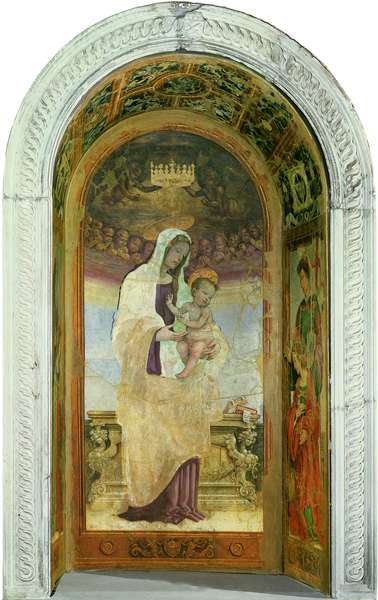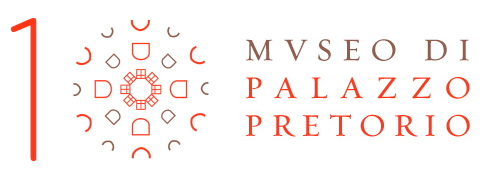Filippino Lippi in Prato

Filippino Lippi, Mercatale Tabernacle, detail - Madonna and Child, 1498
A master of rare sensitivity and exceptional talent, Filippino was born in Prato around 1457, child of the love between the Carmelite monk Filippo Lippi and the nun Lucrezia Buti. After training as a boy in his father’s workshop, at the death of the latter he worked under Fra Diamante and had as master Sandro Botticelli, himself a former pupil of Filippo. In his Lives Giorgio Vasari recalls him in these words: ‘The fame of this courteous master remained so firmly fixed in the hearts of all those who had known him that it sufficed to cover with the grace of his virtue the stain of his birth, and he lived on in greatness and in reputation’.
His ties to Prato and its territory left a decisive mark on his life and his art. In the summer of 1493, Filippino worked at the Villa Medicea di Poggio a Caiano, in the Province of Florence, painting the fresco, now fragmentary, of the Laocoön. A little later he painted the famous altarpiece of the Dual Intercession for the Francescani Osservanti del Palco di Prato, now in the Alte Pinakothek of Munich. The other two major works accomplished by Filippino for his city belong to the Palazzo Pretorio collection: the Mercatale Tabernacle, acclaimed over the centuries as one of the wonders of Prato for its exceptional sweetness and unusual lighting effects; the Madonna and Child painted for the Audience Chamber in the Town Hall, a work of rare intensity and veiled melancholy that incarnates the temperament described by Longhi as ‘the most restless and non-conformist of the Quattrocento’s final decades’. Lastly, the collection includes the little Christ Crucified purchased by the city in 2010 at an auction held by Christie’s in New York. It is a precious record of Filippino’s maturity, when he was influenced by Savonarola’s preaching and by the troubled religious climate prevailing at the close of the century.

